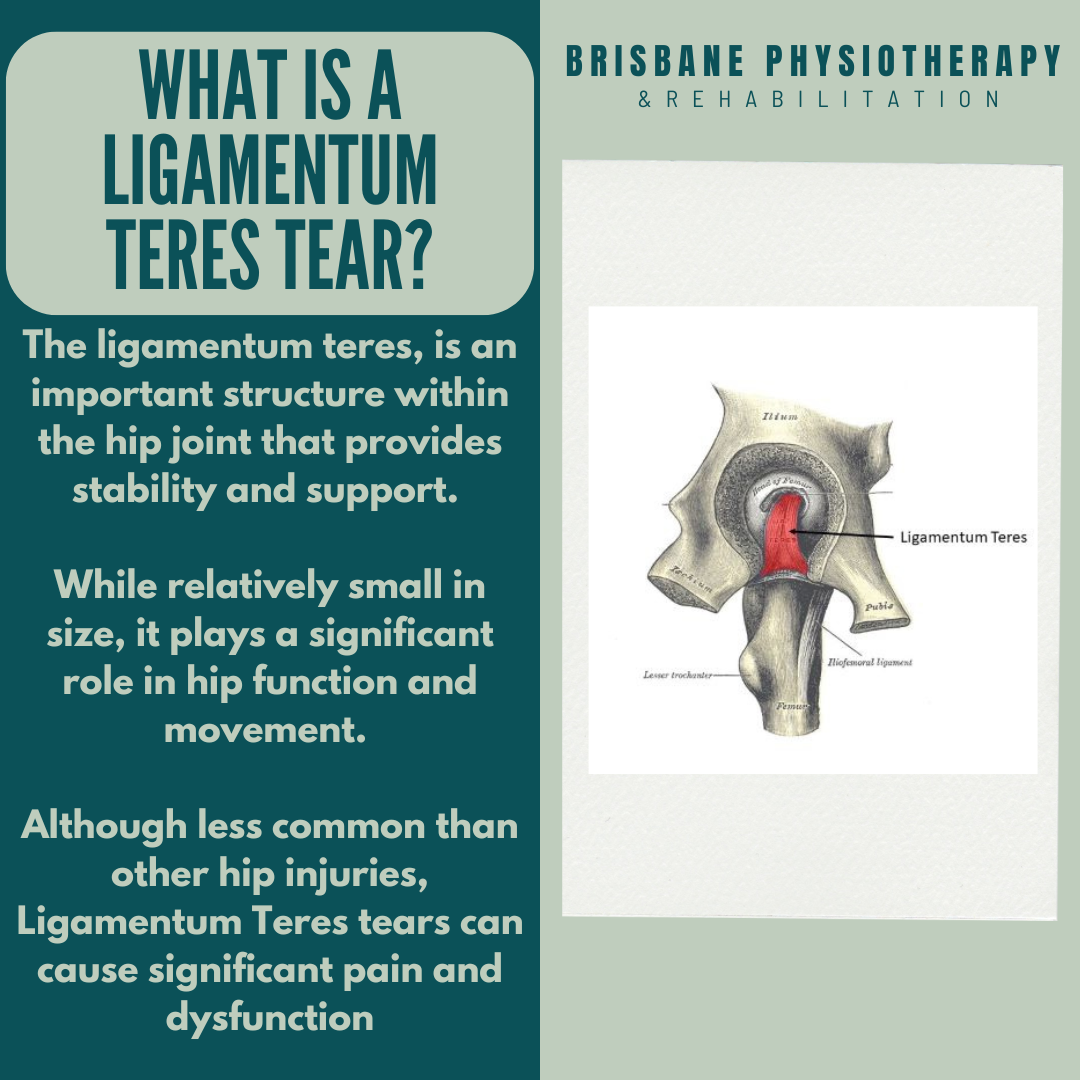Ligamentum Teres Tears
Introduction:
The ligamentum teres also known as the ligamentum of head of femur, is an important structure within the hip joint that provides stability and support. While relatively small in size, the ligamentum teres plays a significant role in hip function and movement. Ligamentum teres tears, although less common than other hip injuries, can cause significant pain and dysfunction.
Causes:
Ligamentum teres tears can occur due to various factors, including:
1. Trauma: Direct trauma or injury to the hip joint, such as a sudden impact or forceful twisting motion, can result in ligamentum teres tears. This can occur during sports activities, falls, or motor vehicle accidents.
2. Repetitive Movements: Overuse or repetitive movements that place excessive stress on the hip joint can lead to gradual wear and tear of the ligamentum teres, eventually causing tears or degeneration.
3. Hip Instability: Pre-existing conditions or anatomical abnormalities that predispose the hip joint to instability, such as hip dysplasia or femoroacetabular impingement (FAI), can increase the risk of ligamentum teres tears.
4. Degenerative Changes: Aging-related changes in joint structures, such as osteoarthritis or degenerative joint disease, can weaken the ligamentum teres and make it more susceptible to tears.
Symptoms:
The symptoms of ligamentum teres tears can vary depending on the severity of the injury but may include:
1. Hip Pain: Persistent or sharp pain in the groin area or deep within the hip joint is a common symptom of ligamentum teres tears. The pain may worsen with movement, weight-bearing activities, or prolonged sitting.
2. Limited Range of Motion: Individuals with ligamentum teres tears may experience stiffness or restricted movement in the hip joint, making it difficult to perform daily activities or engage in physical exercise.
3. Clicking or Catching Sensation: Some individuals may notice a clicking, popping, or catching sensation in the hip joint, particularly during certain movements or when bearing weight on the affected leg.
4. Hip Instability: In severe cases of ligamentum teres tears or associated hip instability, individuals may feel as though their hip joint is "giving way" or feels unstable during movement.
Diagnosis:
Diagnosing ligamentum teres tears typically involves a comprehensive evaluation by a healthcare professional, including:
1. Medical History: A thorough review of the individual's medical history, including any previous hip injuries, trauma, or underlying conditions, may provide valuable insights into the cause of hip pain and dysfunction.
2. Physical Examination: A physical examination of the hip joint, including range of motion tests, palpation, and special maneuvers, can help assess for signs of ligamentum teres tears, hip instability, or other associated abnormalities.
3. Imaging Studies: Imaging modalities such as magnetic resonance imaging (MRI) or arthroscopy may be recommended to visualize the internal structures of the hip joint and confirm the diagnosis of ligamentum teres tears. MRI is particularly useful for detecting soft tissue injuries and assessing the extent of ligament damage.
Treatment Options:
Treatment for ligamentum teres tears aims to alleviate pain, improve hip function, and prevent further damage to the joint. Depending on the severity of the injury and individual patient factors, treatment options may include:
1. Conservative Management: Mild to moderate ligamentum teres tears may respond well to conservative treatments such as rest, activity modification, nonsteroidal anti-inflammatory drugs (NSAIDs, and hip-strengthening exercises. These interventions can help reduce pain, improve joint stability, and promote healing of the ligament.
2. Surgical Intervention: Severe or refractory ligamentum teres tears may require surgical intervention to repair or reconstruct the damaged ligament. Arthroscopic hip surgery, involving minimally invasive techniques, may be performed to address the tear and address any underlying hip pathology contributing to the injury.
4. Rehabilitation: Following conservative or surgical treatment, rehabilitation plays a crucial role in restoring hip function, improving strength and flexibility, and preventing future injuries. Physiotherapy programs tailored to the individual's needs can help optimize recovery and facilitate return to normal activities.
Conclusion:
Ligamentum teres tears are a relatively uncommon but significant cause of hip pain and dysfunction, particularly in individuals engaged in high-impact activities or sports. Early recognition and appropriate management of ligamentum teres tears are essential for achieving optimal outcomes and preventing long-term complications. By understanding the causes, symptoms, diagnosis, and treatment options for ligamentum teres tears, individuals can take proactive steps to address hip pain, restore function.
